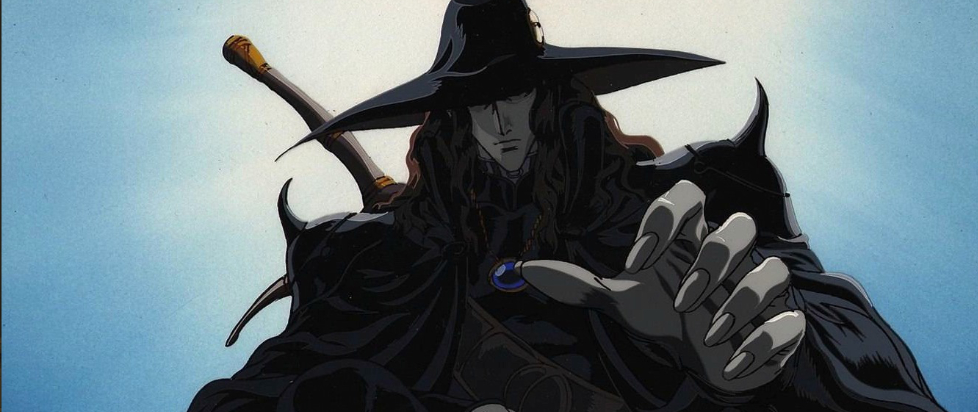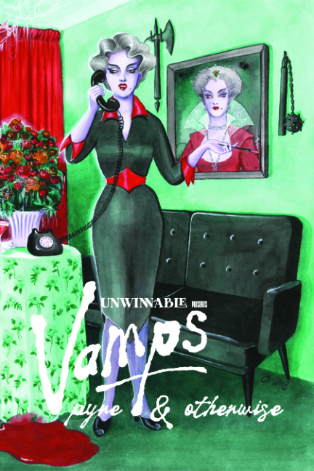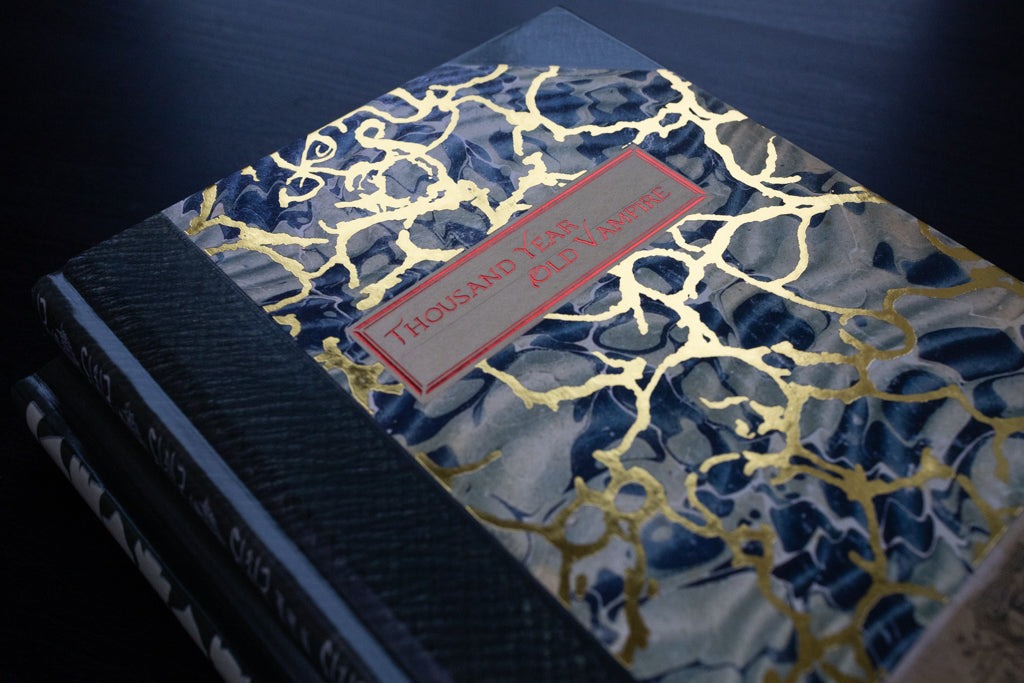
One Thousand Year Old Vampire Hunter D

This column is a reprint from Unwinnable Monthly #168. If you like what you see, grab the magazine for less than ten dollars, or subscribe and get all future magazines for half price.
———
Wide but shallow.
———
It’s been a lifetime since I last watched Vampire Hunter D. Empires have risen and fallen since then, notably Blockbuster video, the doggy-door sized gateway to anime for me and thousands of others. You know the titles, either because you were browsing the spines as well or older siblings and sketchy friends were always talking about the pre-Toonami days with the likes of Bubblegum Crisis, Project A-Ko, Ninja Scroll, and of course heavy hitters like Akira and Ghost in the Shell. This was the monoculture, and we were all locked in, unless you traded tapes with strangers on AOL or went to other extremes.
Among these obelisks of cartoons from overseas stood Vampire Hunter D, an anime based off a series of novels with cover paintings by problematic fave Yoshitaka Amano that synced up seamlessly with the videogames that he also happened to illustrate for. So far in the future it’s back in the past again, we have a standard mysterious hero, monsters classic and mutated, pauses so pregnant they’ve got to be having quadruplets at the very least, egregious nip-slips, a full suite of dripping synths, and wild deviations from established vampire lore. Back in the early 90’s this movie was absolutely captivating because little could even come close to the unhinged weirdness and vibes for vibes’ sake without going completely overboard. Vampire Hunter D feels quaint now, but only because it was just tame enough to remain a relatively safe and repeatable pick for pre-teens and up.
At the start, we are told that this story takes place ten thousand years in the future, and things are bleak. But it’s not a total reinvention like other vampire mythologies, as it’s revealed that Count Dracula is a revered vampire ancestor, and later, likely the father to the titular human-vampire “dhampir” D. But the noble vampires in this movie antagonizing D and the humans seem to only know about Dracula by name, appearing as pale sociopathic shades of his image, existing only to chase whatever whim abates the boredom that consumes them from day to day.

At the root of Count Magnus Lee’s boredom is the fact that he’s un-lived for more than those ten thousand years. He’s wandered for a hundred lifetimes and is currently the head of a family that appears to be mostly skin-peeled lackeys, cancerous monsters, a space-bending mutant, and vampire daughter Countess L’armica Lee, who believes backwards notions such as “pure noble blood” and an unbreakable social order. But she praises her vampire ancestor, whose portrait hangs in their industrial-chic castle, begging him for some insight into her father’s willingness to tempt the destruction their family for this human woman, only to learn that she herself is born of a human woman. The vampire hunter shares this lineage, and even proclaims that her vampire ancestor had a much more well-rounded understanding of love and human relations than she realizes, with a little glimmer in his eye.
Which is to say that despite millennia of experience, Count Magnus Lee appears to have shared very little with his daughter, and in fact seems to have simply withered down to base desires wrapped in incredible power. A nice way of saying that he’s a wafer-thin character, truly just a big creep who treats his crew like shit. It’s a wonder he lived as long as he did.
But while watching Vampire Hunter D again, I can’t help but connect it to the relatively recent solo role-playing game Thousand Year Old Vampire by Tim Hutchings. Like most games in my collection, I haven’t actually worked through this one on my own yet, but I’ve read a few synopses and comics of other people’s playthroughs, and the premise is essentially “difficult choices.” You create your character, give them a life, and then outline how that life is stolen by a vampire, and they rise again. They have some family and friends, possessions that bring to mind these people, and they struggle through non-death, killing and feeding, existing and fighting, living so long that these precious people are eventually forgotten, and once beloved treasures are lost. After the length of several lifetimes, you slip up or fate simply has other plans, and you are destroyed.
Thousand Year Old Vampire is a powerful rumination on memory, death, and the choices we make to hold on to what’s important to us, even knowing that eventually we must return to dust, our names carried only on the wind. Vampires themselves make the perfect vessel for this, tempted and intrigued by their immortality, power, and lust for life in a way that only one removed from the true joys of it can be. To live a thousand lives defeats the purpose of living altogether, of making the most of what little we are given.
Count Magnus Lee has “lived” so long that existence barely carries any thill or nuance for him anymore, he has succumbed to his own flesh. The movie hardly touches on his actual life, but I can’t help but wonder where he started, what he can no longer recall from his interminable journey. To live longer than all recorded civilizations and decide that horniness is really all you’re into, well, it makes for an easy villain for a quick little vampire flick.
Lee has almost seen it all. He’s lived long enough to leave only boredom, to forget everything he’s forgotten and live like an animal that can never be satiated. He laughs and boasts and torments, but if life is pain, he is the end stage of an infinite life of infinite pain. The vampires can keep it.
———
Levi Rubeck is a critic and poet currently living in the Boston area. Check his links at levirubeck.com.




